Today, the BTE3232 Communication System Design Laboratory had the honor of hosting Dr. Eng. Agussalim, S.Pd., MT from Magister of Information Technology UPN “Veteran” Jawa Timur for a global classroom initiative. Dr. Agussalim’s lecture, titled “An Alternative Data Collection Method for IoT Devices in a Smart Environment Scenario using Delay-Tolerant Network,” provided valuable insights into innovative approaches to data collection in IoT environments.

An Alternative Data Collection Method for IoT Devices in a Smart Environment Scenario using Delay-Tolerant Network
In today’s world, where everything is connected through technology, we use many smart devices that gather data. But sometimes, these devices struggle to collect data in areas with poor or intermittent internet connections. To solve this problem, there is a new method called Delay-Tolerant Network (DTN). DTN allows devices to share data even when the internet connection isn’t always available.


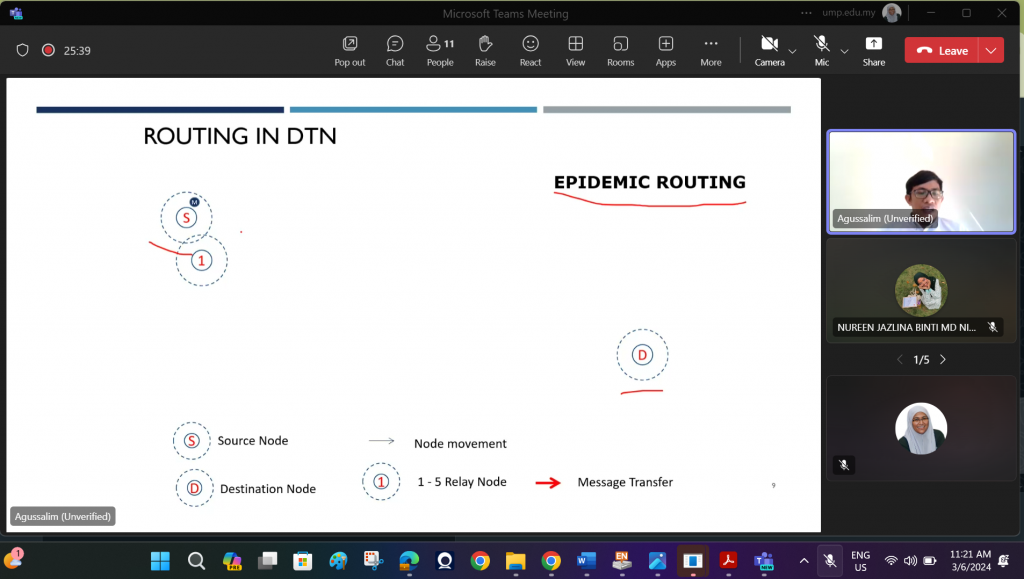
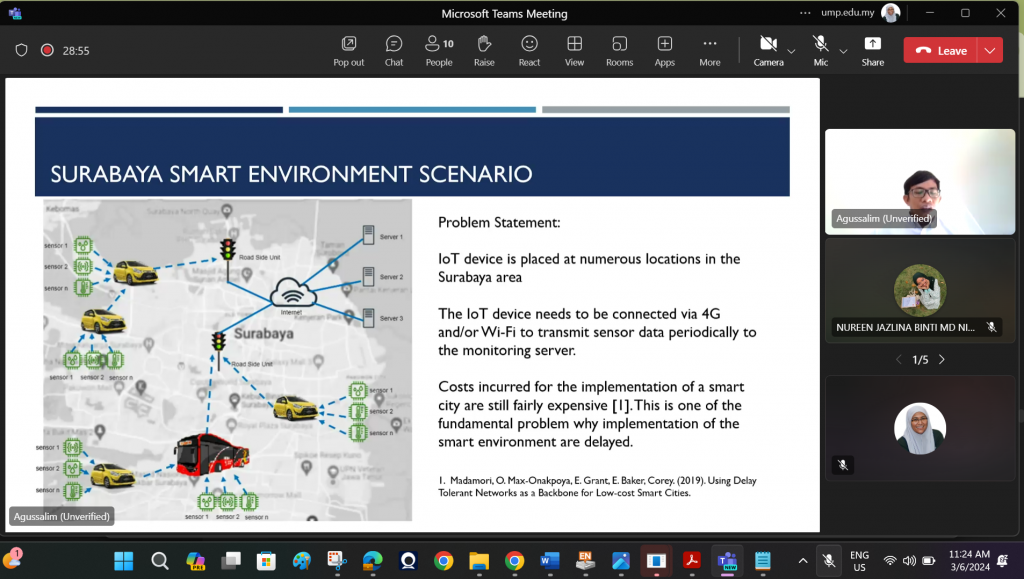
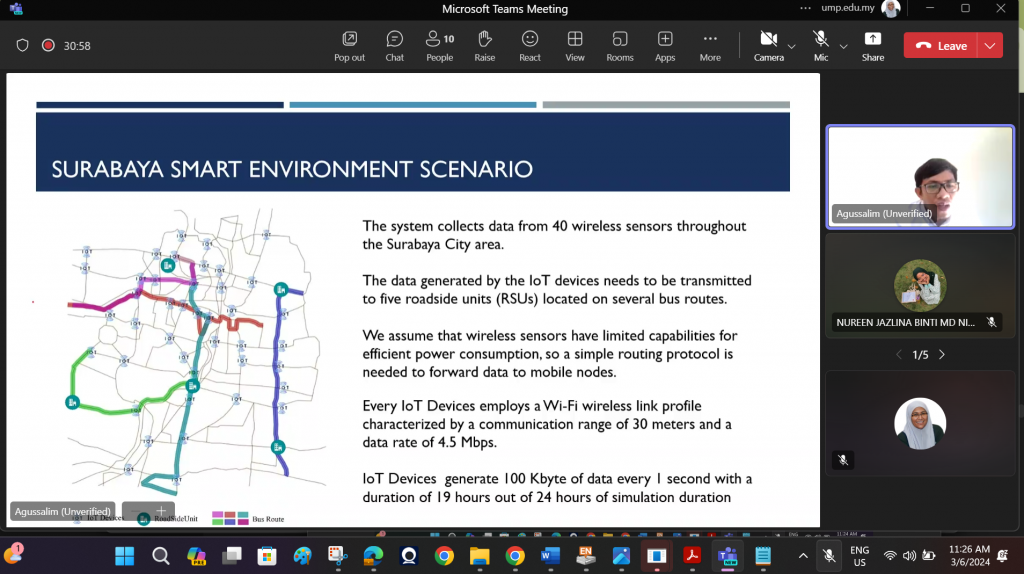
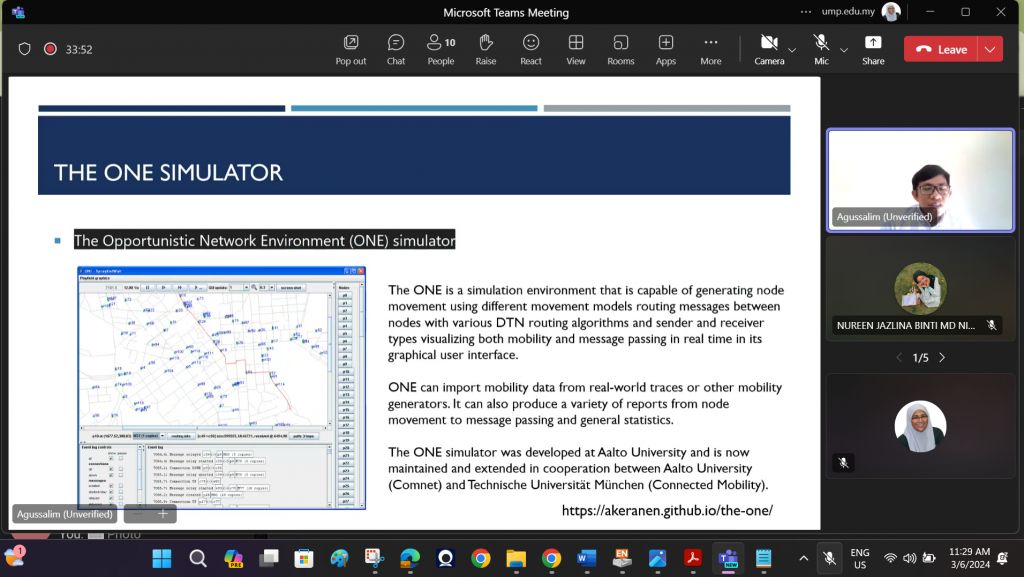
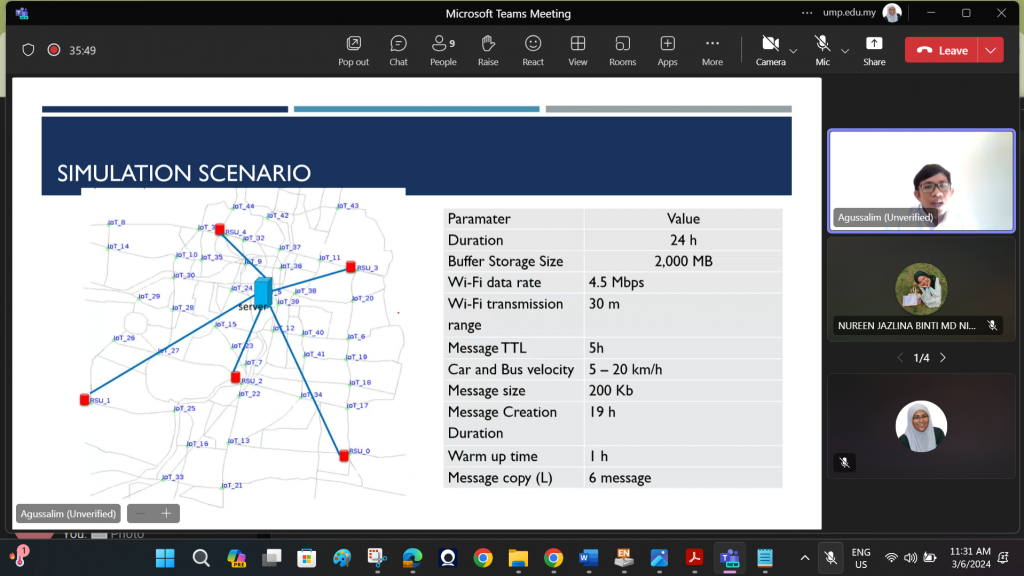

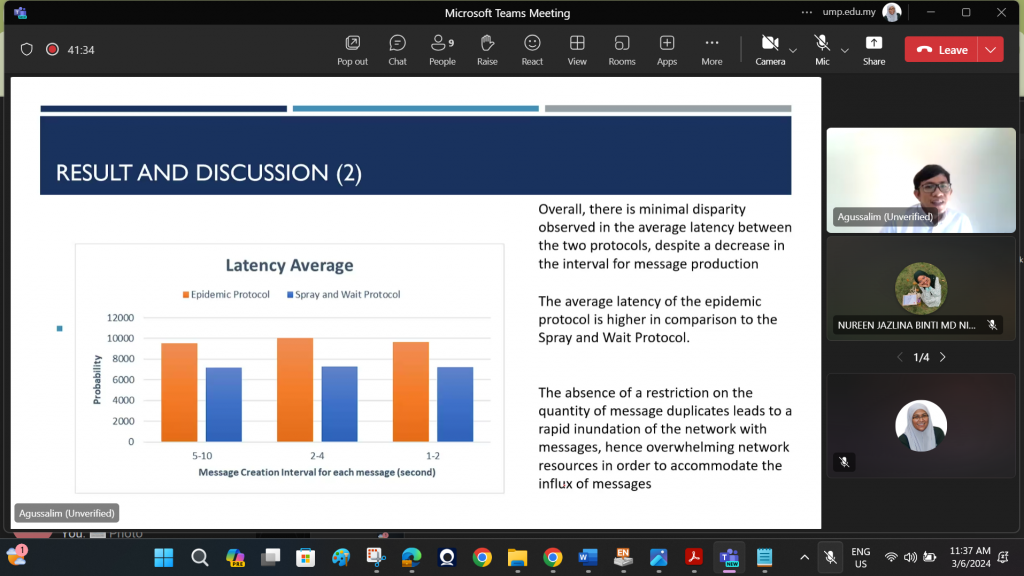
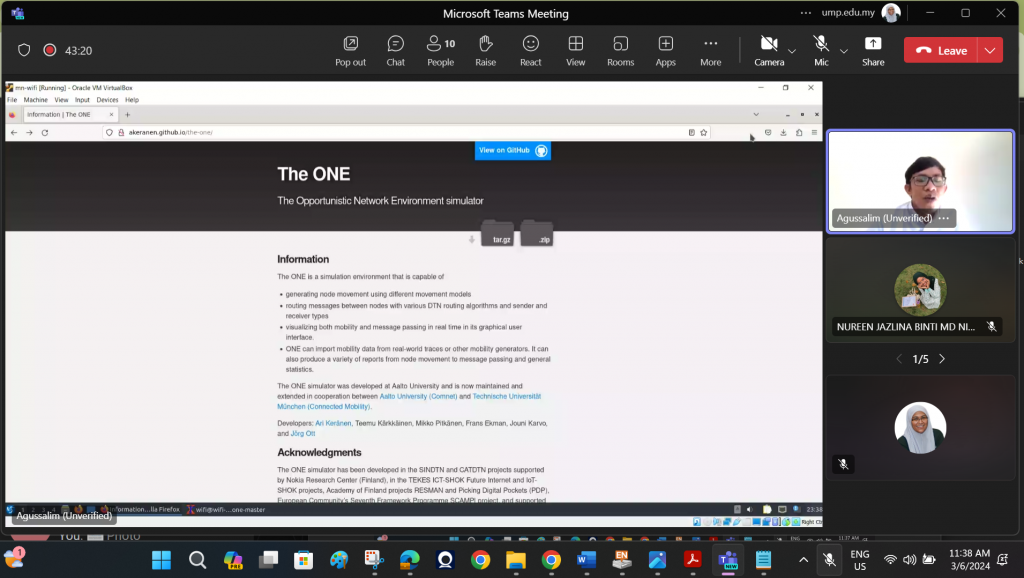


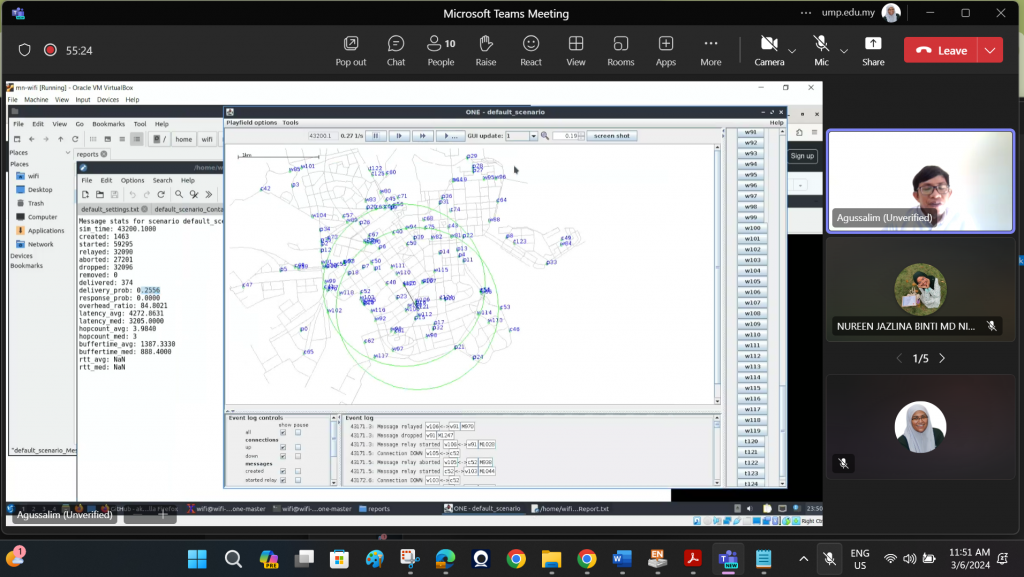
Delay-Tolerant Network (DTN) is a novel networking paradigm that allows for communication in environments where continuous end-to-end connectivity is not guaranteed. Unlike traditional networks that rely on stable connections, DTN employs store-and-forward mechanisms to opportunistically route data packets through intermittent links. This resilience to network disruptions makes DTN particularly well-suited for IoT applications in smart environment scenarios, where reliable data collection is paramount.
Discussion on the Questions Asked During the Session
During the session, Dr. Agussalim addressed a range of questions, shedding light on the intricacies of Delay-Tolerant Networks (DTN) and their applications in IoT environments. Here’s a summary of the key points discussed:
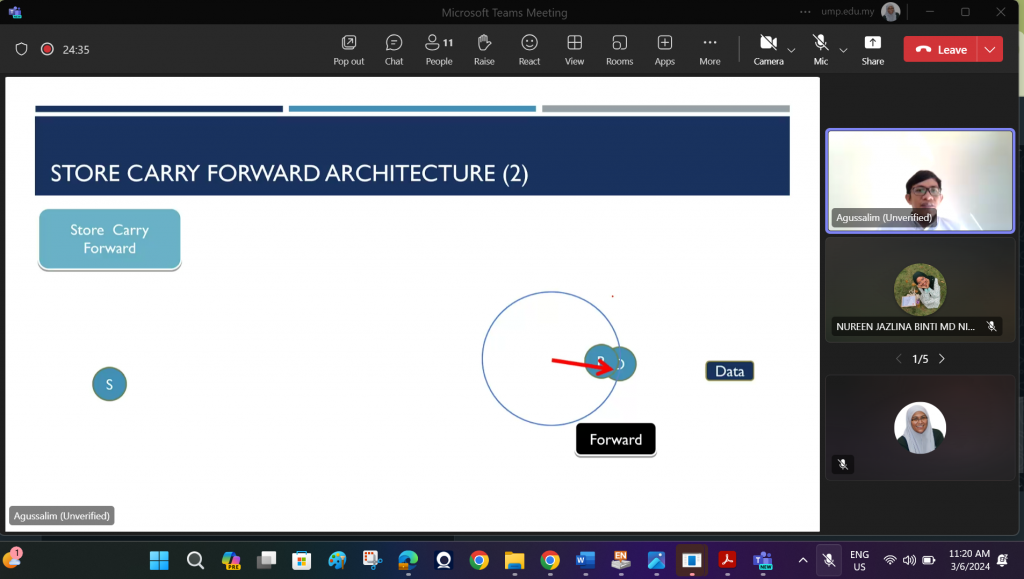
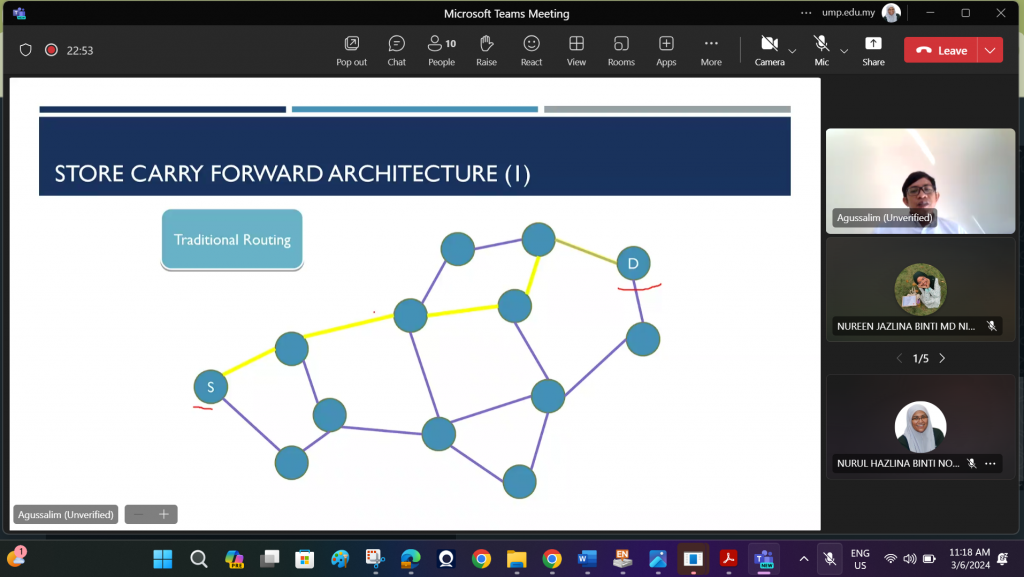





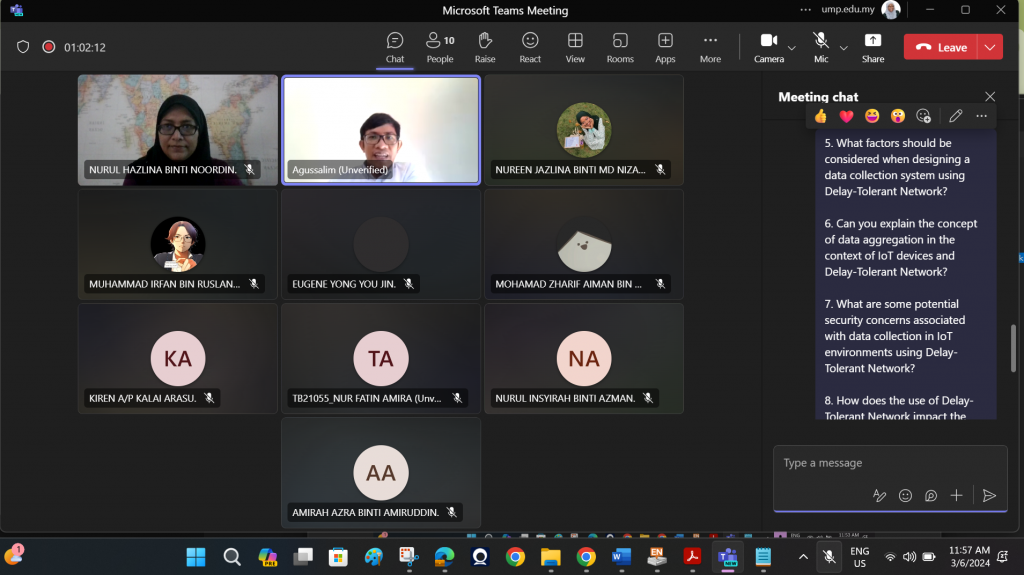
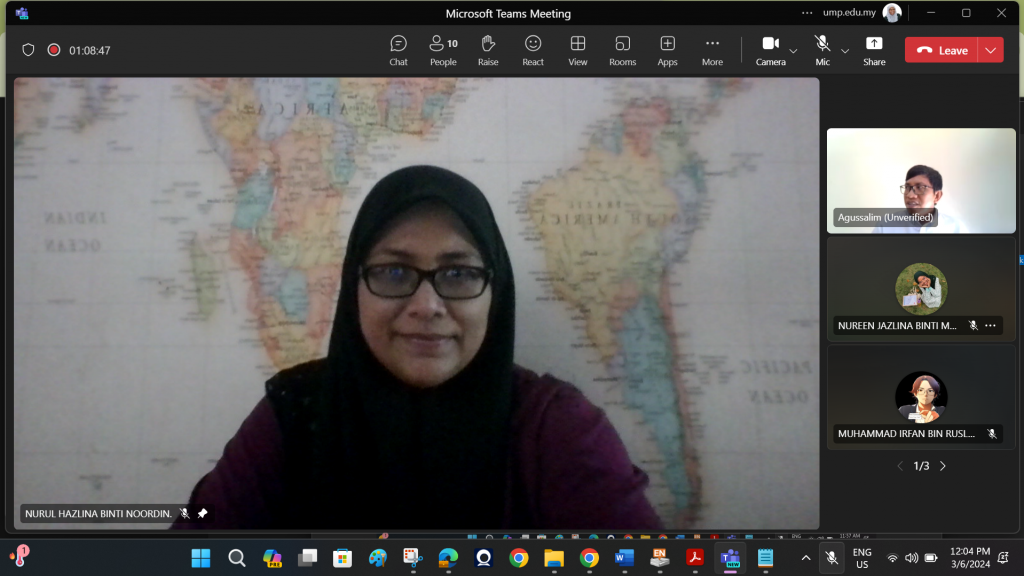

Reflection
As a participant in this global classroom initiative, I found Dr. Agussalim’s lecture to be interesting and relatable with the work we are currently developing involving IoT Applications on UMP STEM Cube. Delay-Tolerant Networks is indeed an alternative data collection methods for IoT devices, opening up new avenues for research and innovation. I look forward to future opportunities to engage with experts from other universities, as it offers a valuable platform for exchanging ideas and learning from diverse perspectives.
In particular, this session underscored the importance of understanding the network aspect of IoT, highlighting its critical role in shaping the future of smart environments.
Nurul Hazlina, June 3rd.